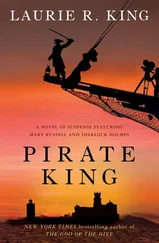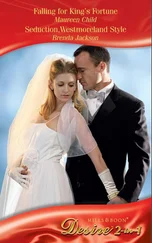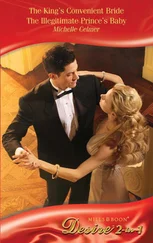Whitehall Palace in those days was a haphazard maze of some thirty thatched, timber-framed buildings whose corridors and enclosures were as crowded with people and as filled with coal smoke and rat droppings as everywhere else in London. It was hardly a fit place for a king, I decided, or even his mistresses. I picked my way through a series of sunless courtyards and cramped passages until I reached the nondescript block of tarred buildings devoted to the counting and storing of the royal treasure. From the poll-tax returns, which specified occupations, I hoped to learn something of Monboddo's business dealings, and from the rate-books what properties he might own, if any, apart from Wembish Park. I suppose I must have, if not quite distrusted Alethea, then at least possessed a robust scepticism concerning her claims. But such scepticism was healthy, I assured myself. Trust, after all, is the mother of deceit. I therefore wished to uncover a few objective and independent facts about Henry Monboddo.
The search proved to be a long and difficult one. I looked as far back as 1651 before finding any reference to Monboddo, I assumed because he, like Alethea, had spent the last nine years in exile. What I read in the records accorded with everything Alethea had said. Henry Monboddo was listed as a dealer of fine books and paintings who had been Keeper of the Royal Library in St. James's Palace for five years during the reign of Charles I. There were no clues, however, as to the identity of his client, of whoever was so desperate to get his hands on The Labyrinth of the World . The rate-book for 1651 listed his address as Wembish Park, along with a house in Covent Garden-a house that, when visited two hours later, proved derelict. The records also mentioned an office in Cheapside that had become, I would discover, the premises of a silversmith who claimed never to have heard of anyone named Henry Monboddo.
Before leaving Whitehall Palace I had also searched the records, on a whim, for information regarding Sir Richard Overstreet. He did not rise in my estimation when I discovered that he was listed as a lawyer. But not all lawyers were necessarily scoundrels, I told myself, and Sir Richard did appear to have enjoyed a brilliant and lucrative career before he was forced into exile in 1651. He had practised privately as a conveyancer and then been appointed Solicitor-General in 1644. Later he held posts in both the Navy Office and the Foreign Office, for the latter of which he served as an envoy-extraordinary in Madrid. He had even taken part in a Royalist embassy to Rome.
Hunched over the crinkled documents, I had wondered for a moment whether Sir Richard, like so many of our gentry, was a crypto-Catholic, possibly even a spy for the Pope or the Spaniards. This was wild thinking, but I knew that in 1645 a secret embassy had travelled to Rome with the purpose of securing military assistance against Cromwell in return for the conversion of King Charles and his advisers to Roman Catholicism. Still, I had no clue whether Sir Richard's trip to Rome had been part of the same mission. Nor did these few facts, like those about Henry Monboddo, tell anything of his character, motives, or even his religion. So I had thanked the clerk for his assistance and then made my way back through the decrepit maze to the landing-stairs.
Now, picking my path through the churchyard, I saw two black-garbed mourners among the stones, a man and a woman, one on either side of the ground. The woman was veiled, the man wearing a broad-brimmed hat. I picked my way past a stand of yews to the first row of monuments, feeling conspicuous and also faintly absurd as I scanned the ground. A hundred-odd markers were pressing upwards from their hummocks of earth in odd angles and uneven rows, gapped here and there like a failed crop, their late-afternoon shadows striping the new-mown hay.
I discovered Silas Cobb's grave in the middle of the churchyard, half overgrown by the branches of a yew tree that screened it, partially at least, from the rest of the churchyard: a granite slab topped by a deep-socketed death's-head. By the time I had located it, one of the mourners had disappeared, but the other, I felt, had been watching me, his face half turned to follow my awkward progress. I decided that after he departed I would take a look at the monument before which he was standing. Then I took a deep breath and fumbled in my pocket for the key. As I did so I reread the inscription:
Hic jacet
SILAS COBB
1585-1620
Soli Deo laus et gloria in saecula
A small bouquet of hyacinths and camomile had been propped against the tablet. I was surprised by the sight. Was someone still grieving for Mr. Cobb even after the passage of forty years? His aged widow, perhaps? I was soberly reflecting that no one would be placing flowers on my grave forty years after my death-not even forty days afterwards, for that matter-when I became even more puzzled by the tablet itself. The other granite markers along the row also dated from the 1620s, but while their death's-heads were periwigged with moss and their inscriptions partly eroded, Silas Cobb's tablet looked new and out of place. Certainly the granite did not look forty years old.
I knelt beside the lozenge and, with the yew's soft needles plucking at my hair, placed my own flowers against the tablet. The lozenge was partly overgrown with nettles, which I cleared away with the tip of my thorn-stick before slipping my fingers underneath. The loam beneath was dark and warm and smelled of decayed tubers. A few handfuls had been scooped aside and a strongbox cached inside the hollow. I felt like a schoolboy exhuming a spurious treasure buried the previous autumn. When I fitted the key into the lock the catch sprang open with a startlingly loud report. I held my breath and looked over my shoulder, through the wind-quivering branches of the yew. The second mourner had departed.
I found no message from Alethea inside the box, so left behind a slip of paper confirming my intention to travel to Wembish Park at her convenience, as agreed. Then I locked the strongbox, replaced it, slid the lozenge back into place, and began creeping through the ranks of weathered granite. I was surprised that Alethea with her obsession with secrecy had not insisted upon a code or an invisible ink.
The windows of the church were dark by now, and Hart Street for the moment looked deserted of traffic. I was moving in the opposite direction, diagonally through the churchyard, southeast towards Seething Lane, which also looked deserted. Much as I detest venturing abroad in daylight, amid the crowds and the stink, at night London is even worse. I had an unpleasant sensation between my shoulder-blades, as if some great bird had perched there and was slowly champing its beak and unfolding a pair of sooty wings. There was something sinister and dangerous about the way the houses in Seething Lane, beyond the gate, seemed to crouch together in the darkness. Beside them reared the great dark hulk of the Navy Office.
I stopped beside a grave to peer at the enormous structure rising above the screen of yew trees. Remembering the patent for Sir Ambrose's Orinoco expedition as well as the scrap of canvas in the Golden Horn, the supposed main topsail of the Britomart , I wondered if I should return the following day to make some enquiries. Perhaps the log for the Philip Sidney still existed, or possibly there was someone in the Navy Office who could tell me about his involvement with Sir Walter Raleigh's voyage to Guiana. I wondered idly if it was possible that a connection existed, however tenuous, between Raleigh's voyage and The Labyrinth of the World . After all, Alethea claimed that Monboddo had been the artistic agent for the Duke of Buckingham, and I knew that Buckingham, the Lord High Admiral, had supported Raleigh's enterprise in Guiana. I also remembered that the other books missing from Pontifex Hall-one of which had been Raleigh's Discoverie of the large, rich, and beautifull Empire of Guiana -all dealt in one way or another with the exploration of Spanish America. Or was I clutching at straws?
Читать дальше












